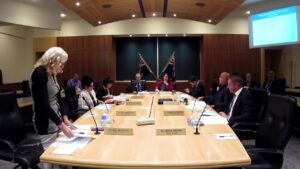
These are challenging times for arts institutions and organizations across Australia, which rely heavily on both public and private funding to sustain their operations. Many are still grappling with the financial aftermath of the COVID-19 pandemic, as expenses continue to outpace funding. This situation has been exacerbated by governments adopting a more frugal approach to arts support, and a significant decline in philanthropic contributions has created an urgent need to reevaluate the funding model for the arts.
Government support has historically played a crucial role in transforming Sydney into a renowned cultural hub. However, recent developments such as the introduction of entrance fees at certain venues, the discontinuation of creative arts programs at universities, the high cost of arts degrees, and the crisis facing live music are indicative of shifting political attitudes towards creativity and cultural exploration. Amidst the clamor over the cost of living, rising interest rates, and a housing crisis, the plight of cultural institutions seems to have been overlooked by policymakers.
Proposed Tax Reforms to Support the Arts
However, a change may be on the horizon. NSW Arts Minister John Graham has announced a cultural arts tax summit scheduled for September 26, following a federal government productivity roundtable hosted by Treasurer Jim Chalmers. This summit aims to explore tax reform suggestions from various stakeholders, including businesses, unions, and independent bodies like the Reserve Bank.
While the Minns government cannot be solely blamed for the current predicament facing arts and cultural industries, it has been criticized for inadequate funding of key institutions. Nevertheless, the proposal to reform the tax system to bolster the struggling creative arts sector is gaining traction. Potential measures include taxing vacant commercial spaces, offering incentives for philanthropic donations, and enhancing tax deductions for creative workers.
Economic Impact of Supporting the Arts
Australia’s cultural and creative activities contribute a substantial $122.3 billion to the economy, with Sydney serving as a gateway for screen, music, and performing arts. It is logical for NSW to prioritize arts funding in discussions on tax reform during the federal government’s second term. Although such changes may require Canberra to forego some revenue, the potential benefits could far outweigh any negatives.
“Theatres in London’s West End experienced an unprecedented surge, with 17.1 million attendees in 2023 and 2024, following a pandemic-era tax relief initiative offering up to 45% deductions on production costs for touring shows.”
This remarkable turnaround could serve as a model for Australia. Analysis by Live Performance Australia suggests that a 40% production tax concession for both commercial and non-profit entities, such as Opera Australia, Sydney Theatre Company, and Michael Cassel Group, could stimulate 168 new productions and generate an additional $24.3 million in government revenue, even after accounting for forgone taxes.
The Arts as Economic Drivers
Funding the arts has significantly shaped Australia’s cultural landscape. However, the arts are often overlooked as economic drivers and have been largely absent from long-term governmental growth strategies. As Treasurer Jim Chalmers considers tax reform, it would be prudent to evaluate whether investments in the arts could yield greater returns compared to other sectors.
As discussions on tax reform progress, the potential for a revitalized funding model for the arts presents a promising opportunity to not only preserve but also enhance Australia’s vibrant cultural scene. Such initiatives could ensure that the arts continue to thrive as a vital component of the nation’s economic and cultural fabric.







